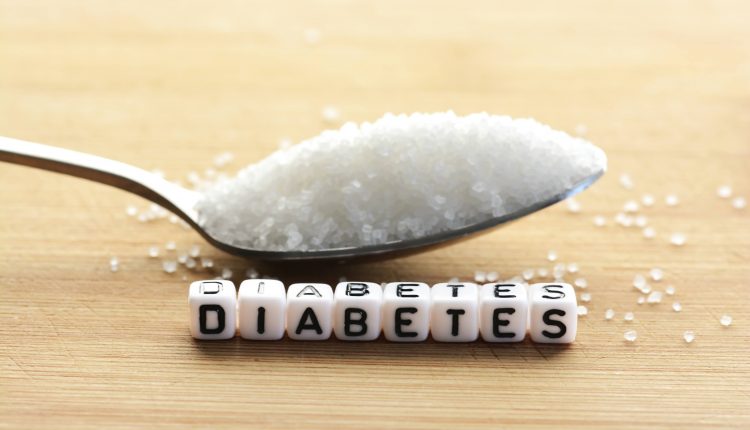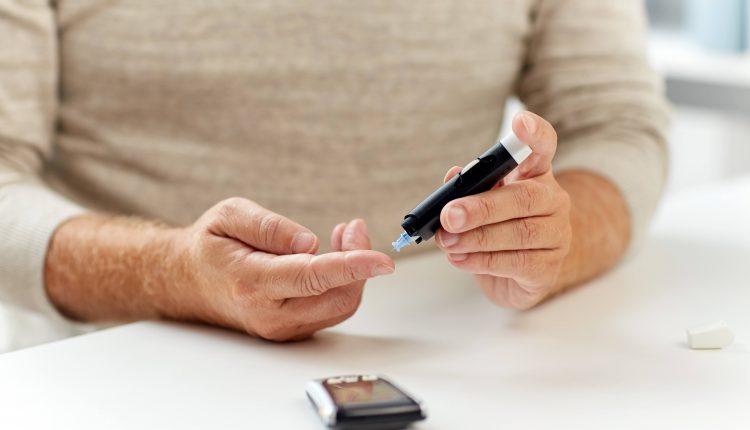As we age, especially over 65, the risk of developing diabetes increases. More than 20 percent of people diagnosed with type 2 diabetes are 65 or older. This article looks at the normal blood sugar for seniors, low and high blood sugar symptoms, and monitoring blood sugar for older adults.
What Is the Blood Sugar Level?
Glycaemia or blood sugar level refers to the concentration of sugar (glucose) at any given time. In human beings, a hormone called insulin regulates the blood sugar level. The pancreas is responsible for secreting insulin hormones in the human body to maintain the proper blood sugar level. It is essential to keep blood sugar levels in a safe range since blood glucose keeps the brain, heart, and other organs healthy. Seniors with diabetes have a higher risk of heart disease, heart attack, vision problems and nerve damage.
Symptoms of Abnormal Blood Sugar
High or low blood sugar in older adults comes with some issues and signs. These situations can be dangerous for seniors if they become severe; more precisely, they may experience a faint or even life-threatening emergency. Symptoms of abnormal blood sugar are as follows:

Low Blood Sugar
Low blood sugar, or hypoglycemia, occurs when the blood sugar level falls too low. When we consume and digest carbohydrates, our blood sugar level rises. After that, the pancreas releases insulin hormone in the bloodstream in response to sugar so that cells can use these carbohydrates to produce energy. In general, a blood sugar level below 70 mg/dL is considered hypoglycemia.
This situation happens for many reasons, including alcohol, endocrine disorders, eating disorders, diabetes, and diseases of the kidneys, heart or liver. Low blood sugar comes with different symptoms, including:
- Lightheadedness
- Dizziness
- Nervousness
- Anxiety
- Chills
- Sweating
- Clamminess
- Pale skin
- Fainting
- Tingling
Seniors with hypoglycemia should be treated timely to prevent certain health disorders. Seniors can treat hypoglycemia by taking proper medication and adopting a healthy lifestyle. Some tips for coping with low blood sugar level problems are:
- Adopt a healthy diet containing whole foods and avoid processed ones.
- Take medicine regularly based on your health care provider’s recommendation.
- Use glucagon injections for emergencies (glucagon is a hormone that can raise blood sugar levels quickly).
High Blood Sugar
High blood sugar or hyperglycemia is a situation in which the human body can’t produce enough insulin or can’t use insulin properly. Hyperglycemia happens due to different reasons, including stress, illness, dawn phenomenon, and type 1 or 2 diabetes. High blood sugar comes with several signs like:
- Fatigue
- Frequent urination
- Headaches
- Blurred vision
- Increased thirst
- Weight loss
- Difficulty concentration
High blood sugar can be dangerous if not treated on time since it can cause eye, kidney, nerve, and heart problems. Some tips for coping with high blood sugar levels are:
- Consuming foods low in sugar and minimally processed
- Use a blood glucose meter to check ketones regularly
- Drink water as much as possible
- Take medications based on your health care provider’s recommendations.
Normal Blood Sugar for Seniors Over 60
The normal blood sugar level in seniors over 60 or older differs from youngsters. Seniors must closely monitor their sugar blood level, routine, activity, and eating habits. The normal range of blood sugar levels is 70- 130 mg/dL before eating a meal. The American diabetes association (ADA) recommends that seniors have a blood glucose level lower than 180 mg/dL two hours after eating.

Seniors can use the chart below to keep their blood sugar levels in check. It is noteworthy that having health conditions and cognitive impairment influence the blood sugar level.
| Health status | Fasting blood sugar | Bedtime blood sugar |
| Seniors with no or few chronic health conditions (cognitive function) | 90-110 mg/dL | 90-150 mg/dL |
| Older adults with several chronic conditions (mild to moderate cognitive impairment) | 90-150 mg/dL | 100-180 mg/dL |
| Seniors living with a long-term care facility (moderate to severe cognitive impairment) | 100-180 mg/dL | 110-200 mg/dL |
Regular monitoring of seniors’ blood sugar using a glucometer device is essential to manage diabetes. Blood glucose monitors come in two types: single-use and continual use. To use a single-use glucometer, you should prick a fingertip using a small needle (lancet). Then, drip a drop of blood on a test strip of the glucometer, and after a few seconds, you can see a number. It has been suggested that the best time to check blood sugar is before meals and at bedtime.
Continued blood glucose monitors are better options for seniors who need to regularly maintain and check their blood sugar levels. These devices can continually monitor blood sugar and warn the user if levels are too high or too low.
Final Words
Maintaining blood sugar levels in a normal range is vital for seniors with diabetes. Both high and low blood sugar in old age can be dangerous, so older adults should monitor their blood sugar regularly. The normal blood sugar for seniors also depends on their health conditions and cognitive impairment.

